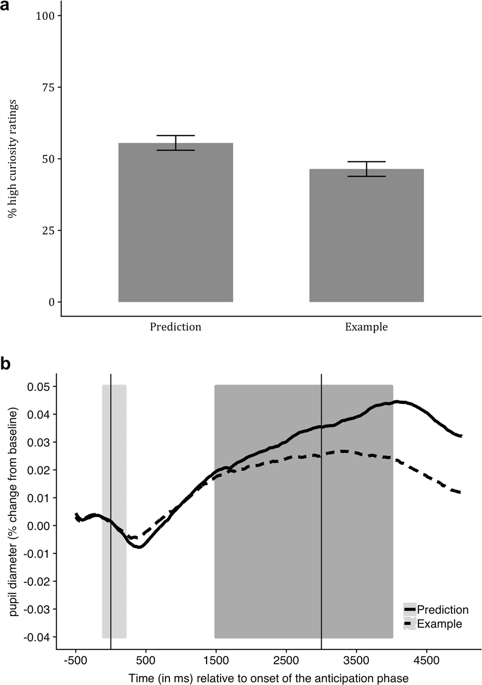npj Science of Learning ( IF 3.6 ) Pub Date : 2019-10-21 , DOI: 10.1038/s41539-019-0056-y Garvin Brod , Jasmin Breitwieser

|
Curiosity stimulates learning. We tested whether curiosity itself can be stimulated—not by extrinsic rewards but by an intrinsic desire to know whether a prediction holds true. Participants performed a numerical-facts learning task in which they had to generate either a prediction or an example before rating their curiosity and seeing the correct answer. More facts received high-curiosity ratings in the prediction condition, which indicates that generating predictions stimulated curiosity. In turn, high curiosity, compared with low curiosity, was associated with better memory for the correct answer. Concurrent pupillary data revealed that higher curiosity was associated with larger pupil dilation during anticipation of the correct answer. Pupil dilation was further enhanced when participants generated a prediction rather than an example, both during anticipation of the correct answer and in response to seeing it. These results suggest that generating a prediction stimulates curiosity by increasing the relevance of the knowledge gap.
中文翻译:

点燃学习的烛光:产生预测会激发好奇心
好奇心刺激学习。我们测试了好奇心本身是否可以被激发-不是通过外部奖励,而是通过内在的渴望来知道预测是否成立。参与者执行了数字事实学习任务,其中他们必须在对好奇心进行评分并看到正确答案之前,生成预测或示例。在预测条件下,更多的事实获得了高好奇心评级,这表明生成预测会激发好奇心。反过来,与低好奇心相比,高好奇心与更好的记忆力有关。并发的瞳孔数据显示,在期望正确答案的过程中,较高的好奇心与较大的瞳孔扩张有关。当参与者生成预测而非示例时,学生的散瞳进一步增强,在预期正确答案期间以及响应看到答案时都如此。这些结果表明,通过增加知识差距的相关性,生成预测可以激发好奇心。











































 京公网安备 11010802027423号
京公网安备 11010802027423号